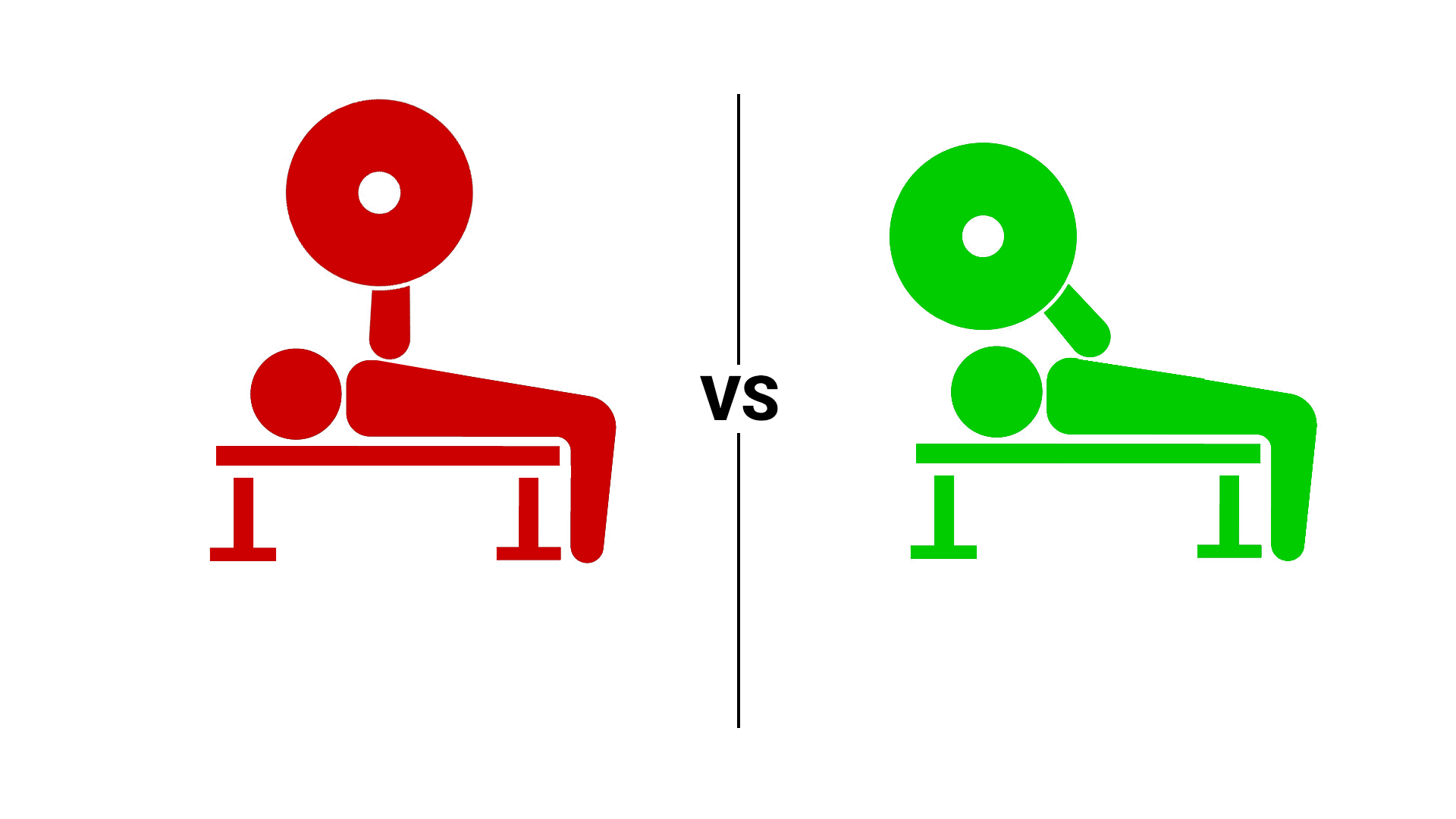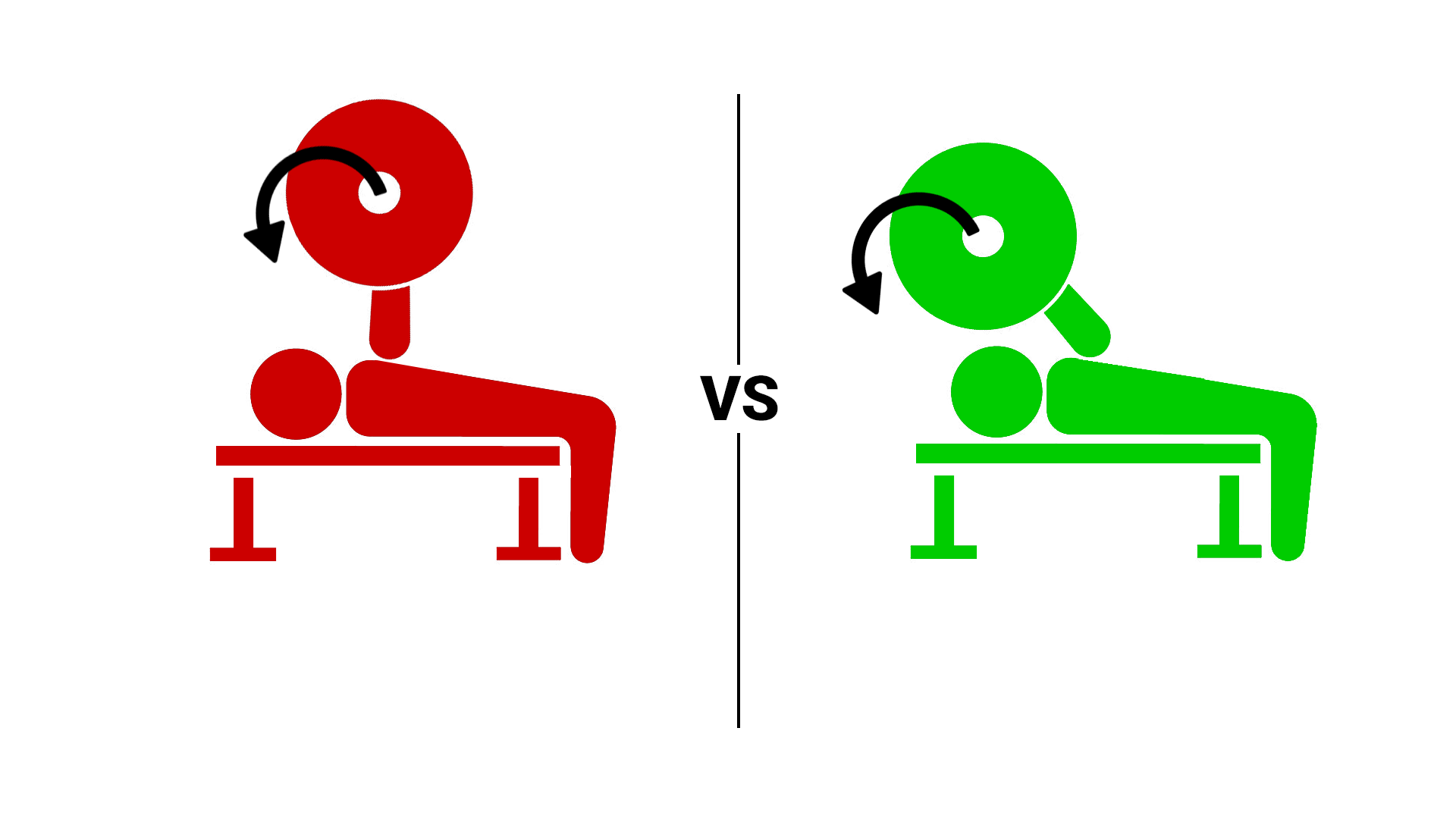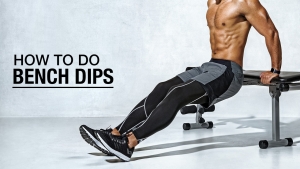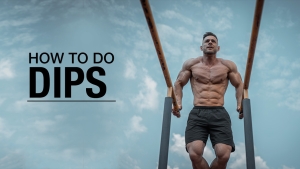
HOW TO DO THE SKULLCRUSHER / TRICEPS EXTENSION
If you want to build big triceps, you’ll want to do the Skullcrusher right. And to do it right, don’t do the Skullcrusher at all.
Skullcrusher or Nosebreaker. The name comes from what happens if you aren’t able to resist the weight. Whatever you call it, the name alone describes doing a triceps extension in a way that minimizes any possible muscle-building benefit.
Let me explain.
Skullcrushers are a variation of an overhead Triceps Extension. The Triceps Extension is biomechanically the best isolation exercise you can do to isolate and build the entire triceps muscle.
A lot of guys do this otherwise excellent exercise incorrectly and ruin it.
The Skullcrusher got its unfortunate name from the way it has been (incorrectly) done for years. You’re probably already familiar with the exercise. The lifter lies supine on their back on a flat bench and lowers a straight barbell or EZ Curl bar toward their head by bending the arms at the elbows.
People get this exercise wrong from the get-go. It has to do with how you start and end the exercise.
One of the common errors people make when attempting to do the Skullcrusher is bringing the dumbbells all the way up until their arms are straight up over their body. You lose a lot of the tension applied to the triceps when you do that and don’t nearly get all the muscle building benefit you could from Triceps Extension.
Is it possible to build big triceps by doing this amazing exercise the wrong way? Yes, however it will take you twice as long and you won’t get nearly the same results as if you do it the way I’ll show you here.
HOW TO DO THE TRICEPS EXTENSION CORRECTLY
I’ll diagram the wrong and right ways to do the “Skullcrusher” (triceps extension) using stick figures. The physics of the exercise shows us how to do it correctly.
Our first stick figure shows a guy lying on his back with arms extended straight upward holding the barbell in the finishing position with an overhand grip. The weight could be a barbell, an EZ Curl bar, or a pair of dumbbells.
In our diagram, the ceiling is up, the floor is down and our stick figure is lying supine on a flat gym bench, looking up at the ceiling. Arms are straight upward at a 90-degree position to the upper body.
Our second stick figure shows our stick figure lifter in the same position, only with arms into position backward a few degrees at maybe 75 – 80°.
Compare these arm positions.
In the top diagram, the weight creates an arc as it’s lowered and raised. The arc ends in a precarious position at the upper half of the lifter’s head, ergo the name Skullcrusher, or Nosebreaker.
Let’s now look at our second stick figure.
The arc created by the path of the weight passes over the lifter’s head. This is the one that’s right. The arc goes back and forth past the head, so there’s no “skull crushing” going on.
If you start thinking about the physics of this, you can begin to see why the second one is a superior exercise, and why the top one does so much less for the triceps. You could hold a weight in this approximate 90-degree angle for a long time because the force is traveling through the outstretched arm with elbow joint locked, basically in a position of rest.
In the second diagram with the arms angled back, the triceps have to work all the time to keep the extra weight under control. Conversely, in the top diagram, the arms support the weight and the triceps are hardly doing anything at all, other than just keeping the arms straight.
When we apply physics to these two different techniques, the upper arm, forearm, and elbow form a lever. The lever arm in the case of the triceps in this exercise is your forearm. The fulcrum is the elbow.
No matter which joint we discuss in the body, when the lever arm (aka moment arm) is parallel to the force that’s acting on it, no force is required to hold it. You know this already because we can “rest” between reps of a standard bench press variation by holding the bar at arm’s length, or by standing erect under a squat bar.
That is what’s happening in the traditional “Skullcrusher”. Gravity is running parallel to the arm. When the two forces line up and are parallel to each other there’s no work being done by the entire muscle in question.
You can observe this in the starting position of the incorrect ‘Skullcrusher’ version below. And you can also observe the incorrect finishing position with the bar being lowered directly toward the face.


Now take a look at the correct variation of this movement – the Barbell Triceps Extension.
When the arm is angled slightly backward in that overhead position and not in parallel alignment with gravity, the triceps are required to work to hold it in the finished position of the exercise. The triceps are loaded at all times in this overhead barbell extension.

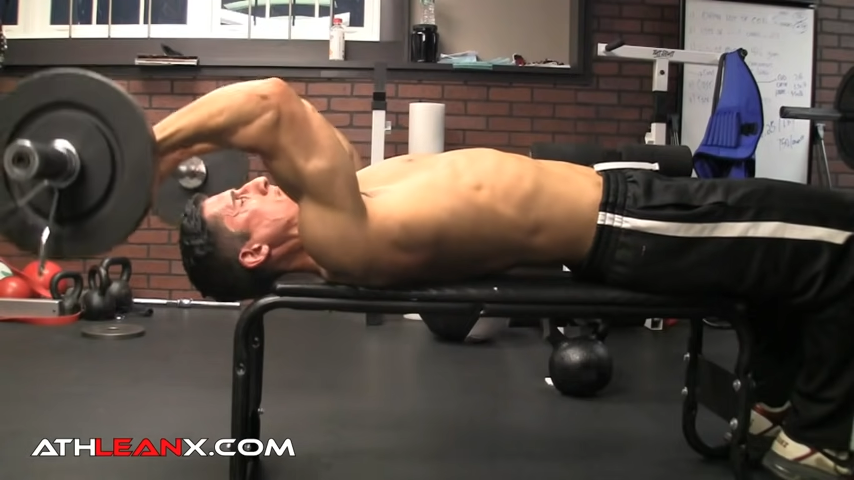
With the Triceps Extension you still should aim for a complete range of motion. The forearm should come as close as possible to the biceps in the lowest position. This makes the forearm a more “fully active” lever, meaning that the forearm is as far away from straight as possible.
Because the Skullcrusher–even when done properly–requires lowering the weight back toward your head, arm path relative to your head makes a big difference. When your head is in the way, there’s a very real stopping point–your head–that limits the range of motion (and potentially crushes your skull).
Doing the triceps extension with arms angled slightly back permits a larger range of motion. It is important to not extend the arms too far backward because that also limits the range of motion.
ANATOMY OF THE TRICEPS
We all know that the triceps (not “tricep”…there’s always an “s”) is a single muscle on the back of the arm that’s got three heads (tri = three, and ceps = heads).
The triceps make up two-thirds of the size of your upper arm muscles. It’s the largest individual muscle in the upper arm. You can train biceps movements all day long and still not get the arm muscle development you want.
The three heads of the triceps are the long head, the medial head, and the lateral head.
The long head actually originates on the outside edge of the shoulder blade on a structure called the gleno-humeral tubercle. The long head adds stability to the arm and functions like the other two heads to extend the forearm. Because the long head crosses two joints–shoulder and elbow–the degree of stretch during resistance exercise matters in how much leverage it has.
The medial head of triceps originates on the back of the upper arm bone and attaches below the elbow.
The lateral head also originates on the back of the upper arm bone in a slightly different spot than the medial head and also attaches below the elbow. Research supports that the lateral head is the strongest of the three.
The lateral triceps head and long head together form that horseshoe shape that we all want to see in a well-developed triceps muscle. The medial head forms the middle of that “horseshoe”.
Knowing that all three heads come together and share that single tendinous insertion point just beyond the elbow joint is important when you evaluate which arm exercises are best, or even if one exercise is better than another one at all.
The triceps’ one job biomechanically is to extend the arm. It works like a hinge, and it doesn’t matter whether your hand is palm up or palm down, supinated or pronated. Unlike the shoulder or hip, training the triceps is pretty simple. Straighten the arm when loaded. The load can be anything: barbell, EZ Curl, dumbbells, bands, or cable machine with cable attachments.
APPLY YOUR KNOWLEDGE OF TRICEPS ANATOMY
Knowing specifics about how the triceps function helps you evaluate which triceps movements work them best.
We all know that pressing exercises and arm extension exercises will work the triceps. But which is best?
Pressing movements like close-grip bench press exercises work the triceps. They also involve the anterior deltoids, some pec, and various support muscles around the shoulder.
So, presses like these do not isolate triceps, and it’s difficult to know exactly how much triceps are involved due to the contribution of those other muscles, especially the anterior delts. Presses are multi-joint exercises commonly called compound exercises, not isolation single-joint exercises.
Pure arm extension exercises, on the other hand, do isolate the triceps when performed properly.
You can still butcher a triceps isolation exercises by using poor form, by either creating momentum or involving other muscles. For instance, “jackhammering” a cable triceps pushdown by leaning over the bar and pushing down with body weight, is an example of using improper form for a triceps extension.
RANGE OF MOTION
There’s debate over range of motion and how much stretch you need in the triceps for hypertrophy. Some stretch is good, just not too much stretch. Overstretching creates a situation called passive insufficiency which we don’t have time to get into here.
Some triceps isolation exercises provide more range of motion than others. Skullcrushers (again, when properly performed) offer the most. Maybe the least ROM of the well-known triceps exercises is the dip.
Next time you’re in the gym, watch a buddy perform a dip and pay close attention to how much their arms actually move. Even when performed using correct dip form, the arm bends and extends over a very short range of motion.
HAND AND WRIST POSITION
Finally, because the triceps share a tendon, one head won’t get more work based on how you turn your hand. The key is to use good form and use a grip that’s comfortable for you. Fortunately, you have choices for which tools you use.
If triceps are a lagging body part and shoulder muscles are not, for example, then the Triceps Extension is for you.
BARBELL OR EZ CURL BAR: WHICH IS BETTER FOR TRICEPS EXTENSION?
The Skullcrusher exercise traditionally uses a barbell or an EZ Curl bar. Does one work better than the other?
Not really.
Theoretically, neither bar is better when it comes to the movement itself or the way they work the triceps.
The central difference is comfort. The EZ Curl bar puts the wrist in a more neutral position.
Because the three heads of the triceps share that single tendon insertion we described above, the position of your hands and wrists doesn’t matter. Grip strength is also a factor in bar choice. You should use the bar you can hold best and most comfortably so that you can concentrate on your triceps and proper form.
Use whichever you have available. If you have both available, use the one that lets you concentrate on your triceps and proper form instead of how your wrists feel.
TRICEPS EXTENSION AND SKULLCRUSHER VARIATIONS
Let’s take a look at a few different forms of Triceps Extension (or Skullcrusher exercise with dumbbells) movement that you can do with different pieces of exercise equipment.
Each of these triceps extension variations is highly effective for the triceps, so you can add them to your triceps training arsenal and apply them depending on what equipment you have at your disposal.
DUMBBELL SKULLCRUSHERS (dumbbell TRICEP EXTENSIONS)

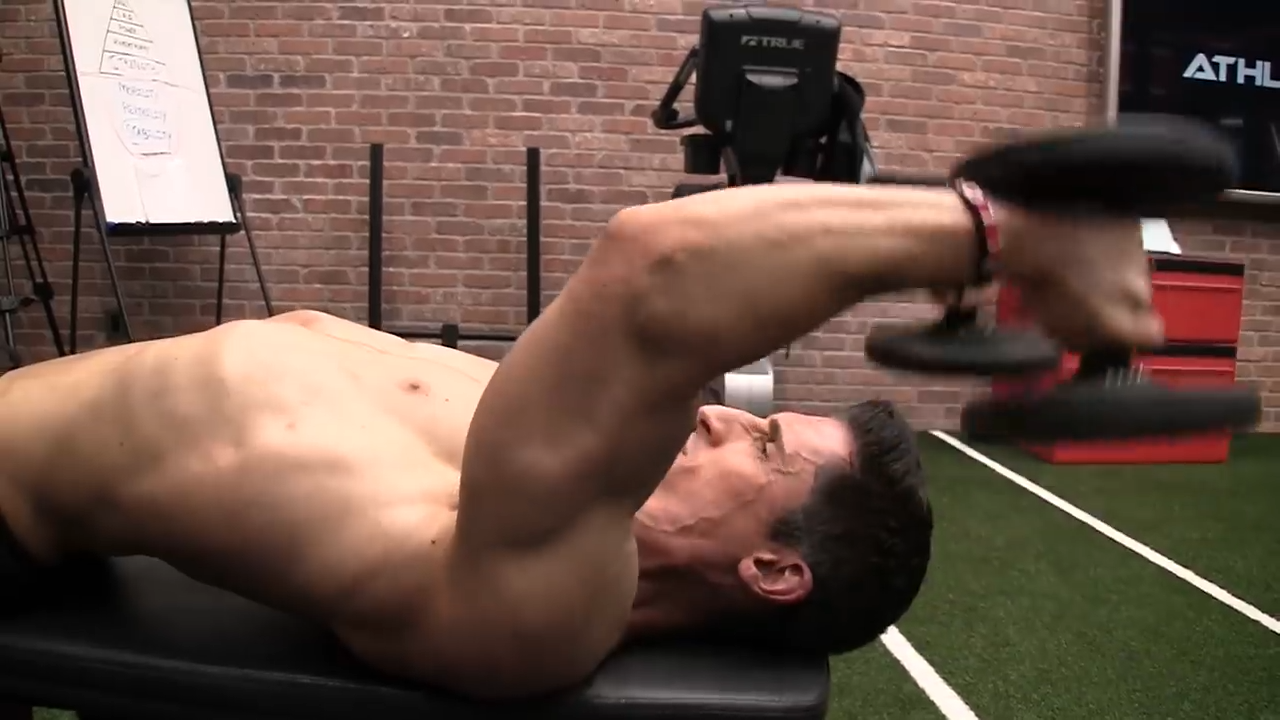
You can use dumbbells and make the Triceps Extension (Skullcrusher) even more effective.
That’s right.
Dumbbells have an advantage that the bars don’t have: with the elbows tight in toward your ears, they allow the weights to pass by your head on either side and the arms to work independently. The stronger arm can’t compensate for the weaker one and create muscle imbalance. (Yes, we all have one side that’s stronger than the other.)
The same principles apply to dumbbells as apply to bars. You’ll be lying on a weight bench with feet flat on the floor, shoulder blades tucked under with a pair of dumbbells in your hands. The arms should be slightly angled back to keep tension on the triceps from original starting position to finish. Again, the reason we angle the arms back isn’t only to avoid crushing our skulls or breaking our noses.
PROPER FORM FOR DUMBBELL SKULLCRUSHERS
To do Dumbbell Skullcrushers (Overhead Tricep Extensions) correctly, lie on a weight bench and hold a dumbbell in each hand using a neutral grip. The heels of each hand will be tracking toward the ceiling during the movement.
Just as with a barbell or EZ Curl bar, start by keeping your upper arms angled slightly backwards and not at 90° to your upper body.
Bend your arms at the elbows while keeping your shoulder joint in a stable position and lower the dumbbells past your head. Finish by extending your arms. Squeeze your triceps at the top of the movement, again, with your arms aimed slightly back.
Use the basic form as when using a bar and enjoy the added freedom of movement at the wrist. The dumbbell head should track past your head.
It’s perfectly OK to let your wrists rotate naturally as you do the movement. Remember that the triceps has that single tendon, so what you do with your wrists doesn’t matter as long as you’re not overstressing the wrists or forearms.
BANDED LYING TRICEPS EXTENSION

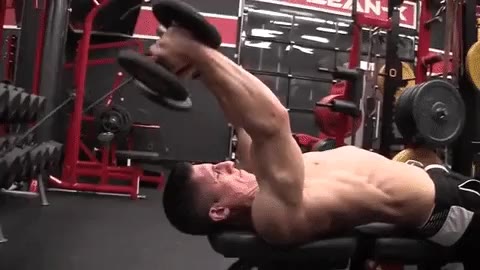
If you’re really serious about upping your game for triceps hypertrophy exercises, try the Banded Lying Triceps Extension.
This skull crusher variation takes advantage of a concept you should learn if you don’t know it already: the resistance curve.
The resistance curve refers to the increase or decrease in load you encounter at various spots along the movement. Using our Triceps Extension for example, the resistance is greatest near the bottom of the movement and least at the top.
You can use a band to increase the resistance of the exercise at the top position, so that your triceps are working really hard through the entire movement.
There is no resting at all! You will continue to feel the higher degree of tension and muscle activation at the top where the exercise would ordinarily be easier. Loading all phases of an exercise will get you to muscle failure faster.
Starting position for this resistance band tricep extension is looping a band around a pair of dumbbells and securing it to a dumbbell rack or power rack, or anything stable behind your head. Move your flat bench away from that spot to the position where you’ll get the amount of consistent resistance you want when you start and finish the overhead tricep exercise, and adopt a comfortable position lying on the bench. Ideally, the band should be relaxed at the bottom for your triceps to be bearing the load of the dumbbells.
You can pair these with biceps movements to work both sides of the arm. Doing this applies the exercise principle of reciprocal inhibition. Fatiguing one side of a joint reduces its ability to resist the other side.
See my post on Best Triceps Workout for details on setup and form for this excellent isolation exercise.
OVERHEAD TRICEPS PUSHAWAY

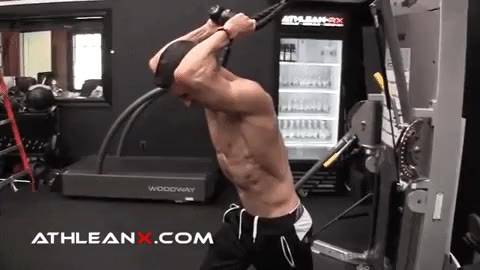
Working your triceps muscle comprehensively requires you force muscle activity in the long head by stretching the triceps brachii with basic overhead exercises that position the arm over your head, the same way we do with our other triceps extensions.
The Overhead Triceps Pushaway (also known as the Rope Triceps Extension) in an overhead position accomplishes that objective, but it also leverages the value of the cable machine which applies constant tension to the entire triceps muscle.
Doing a pushaway cable tricep exercise with a rope attachment puts your hands and wrists in that comfortable, neutral position. You’ll use a split stance with your feet.
A cool side benefit of this fantastic isolation exercise is the bonus abdominal exercise you get as you hold your upper body steady. If you do this as a seated triceps extension, you don’t get the same benefit. Since you don’t have the stabilizing force of the weight bench, you’ll need your abdominal core muscle fibers for sturdy body position during this movement.
The triceps overhead extension is a fantastic mass building exercise for the triceps. It loads all three muscle heads of the triceps in an isolation movement without potential involvement of synergist muscle fibers the way a push exercise does.
Hopefully this simple tutorial, stick figures and all, will help you to understand how to do this effective exercise properly to build bigger triceps faster.
f you want to train like an athlete and put science back in every workout you do, check out our ATHLEAN-X programs and get started right away on building a ripped, muscular, athletic body. Training the right way will not only make you more athletic, but also improve your performance in everyday activities.

- The dumbbell skull crusher exercise (or the Triceps Extension) is a tried-and-true triceps exercise intended to develop that horseshoe-shaped muscle on the back of the arm.
- Unfortunately, this staple exercise is often done wrong, making it much less effective for triceps muscle hypertrophy or stronger triceps.
- The worst mistake with triceps extensions is in the arm position at the start and finish of the movement when arms are pointed straight toward the ceiling when lying in the supine position.
- Seeing gains is all in the exercise execution. Aim the arms slightly backward at the start and finish of the Skull crusher/Triceps Extension exercise to keep the load on the triceps through the entire exercise.
- The triceps is a three-headed muscle but shares a single tendon that attaches to the forearm just beyond the elbow joint. That single tendinous attachment allows you lots of freedom on how to position your hands.
- A barbell, EZ Curl bar, dumbbells, or even resistance bands can be used for this excellent exercise. You can apply physics to a range of overhead exercises for the triceps.
- Check out the Best Triceps Exercise for Mass article that evaluates all the common exercises for triceps for my opinion of which one is best. Spoiler alert: it’s the Triceps Extension! You’ll definitely want to include this in your exercise program.
SKULLCRUSHERS FAQS
The overhead triceps extension is one of the best upper body exercises for growth of the triceps because it has the arm angled slightly backward instead of at a 90-degree angle above the body, which loads the triceps at all times during the exercise. You can get additional benefits by performing dumbbell triceps extensions which give you a larger range of motion and allow you to train each arm separately. If you add a resistance band to the dumbbell version, you will get consistent resistance throughout the exercise's entire range of motion, further improving muscle gain.
Tricep extensions are one of the best kinds of tricep exercises for muscle growth in the triceps. To get maximum benefits of triceps extensions, it's best to do these and all other triceps exercises just 1-2 times per week to get the right dose of exercise. These major muscles need rest between training sessions to allow for muscle growth. Training the triceps in isolation can help them grow and help you build arm strength, so it is definitely recommended to do the triceps extension in your arm workouts.
Tricep extensions are useful for building muscle mass in the triceps, because they are great for triceps muscle recruitment. You can do these with a barbell, or do cable machine extensions, but performing them with dumbbells will help you with a larger range of motion and the ability to work both sides independently to prevent muscle imbalances.
REFERENCES

Jeff Cavaliere M.S.P.T, CSCS
Jeff Cavaliere is a Physical Therapist, Strength Coach and creator of the ATHLEAN-X Training Programs and ATHLEAN-Rx Supplements. He has a Masters in Physical Therapy (MSPT) and has worked as Head Physical Therapist for the New York Mets, as well as training many elite professional athletes in Major League Baseball, NFL, MMA and professional wrestling. His programs produce “next level” achievements in muscle size, strength and performance for professional athletes and anyone looking to build a muscular athletic physique.
















